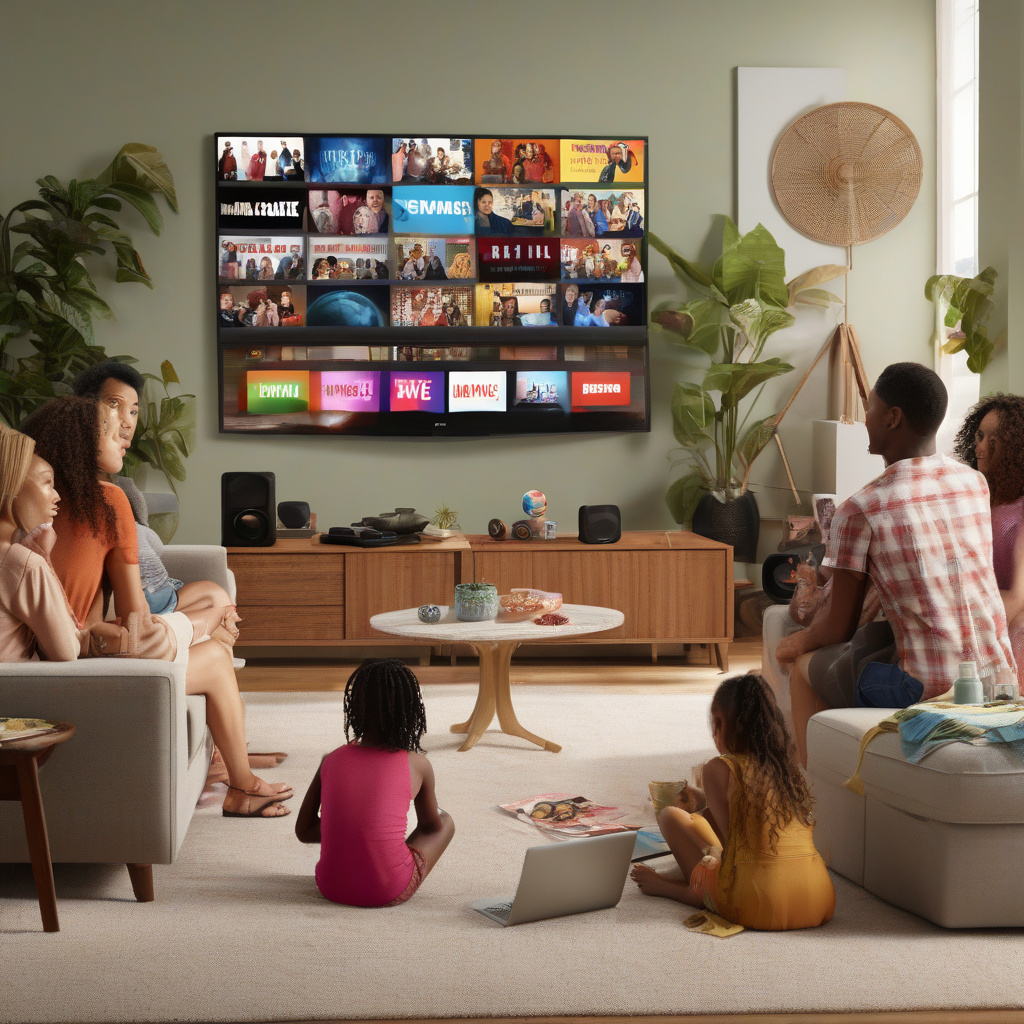Title: The Rise of Streaming: A Game-Changer in Television Viewership
In a groundbreaking shift for the entertainment industry, streaming services have emerged as the dominant force in television viewership. According to a recent report, streaming platforms surpassed cable and broadcast television combined for the first time last month, claiming a substantial 44.8% share of all television viewership. This milestone not only underscores the growing influence of streaming services but also signals a significant turning point in how audiences consume content.
The surge in streaming viewership can be attributed to several key factors. Firstly, the convenience and flexibility offered by streaming platforms have revolutionized the way people watch TV. With on-demand access to a vast library of content, viewers can choose what to watch, when to watch it, and on which device—empowering them with unprecedented control over their entertainment experience. This level of customization simply cannot be matched by traditional cable and broadcast television.
Moreover, the original programming produced by streaming giants has garnered widespread acclaim and captured the attention of audiences worldwide. Hit series like “Stranger Things,” “The Crown,” and “The Mandalorian” have not only attracted loyal fan bases but have also earned critical praise, cementing the reputation of streaming services as hubs of innovative and high-quality content. As a result, viewers are increasingly drawn to these platforms in search of fresh, engaging, and culturally relevant shows that push the boundaries of storytelling.
Additionally, the competitive pricing and absence of long-term contracts associated with streaming services have made them more appealing to consumers, especially in an era where financial flexibility and value for money are top priorities. By offering affordable subscription plans and the option to cancel anytime, streaming platforms have positioned themselves as cost-effective alternatives to traditional cable packages, which often come with hidden fees and restrictive terms.
Furthermore, the rise of smart TVs, streaming devices, and high-speed internet connections has facilitated seamless access to streaming content, making it easier than ever for viewers to transition away from conventional television formats. The proliferation of smart TV features, such as built-in streaming apps and voice-controlled remotes, has integrated streaming into the fabric of modern home entertainment systems, blurring the lines between traditional TV and online streaming.
As streaming continues to dominate the television landscape, content creators, advertisers, and broadcasters are compelled to adapt to this new paradigm or risk being left behind. To remain competitive in this evolving ecosystem, traditional media outlets must embrace digital innovation, explore partnerships with streaming services, and develop strategies to engage audiences across multiple platforms. By embracing change and leveraging the unique strengths of streaming platforms, broadcasters can stay relevant and capitalize on the opportunities presented by the shifting media landscape.
In conclusion, the unprecedented milestone of streaming services surpassing cable and broadcast television in viewership marks a pivotal moment in the evolution of the entertainment industry. With their convenience, original content, affordability, and technological advancements, streaming platforms have reshaped the way we consume television and set a new standard for entertainment delivery. As streaming continues to reshape the media landscape, industry players must adapt, innovate, and collaborate to thrive in this new era of on-demand, personalized content consumption.

